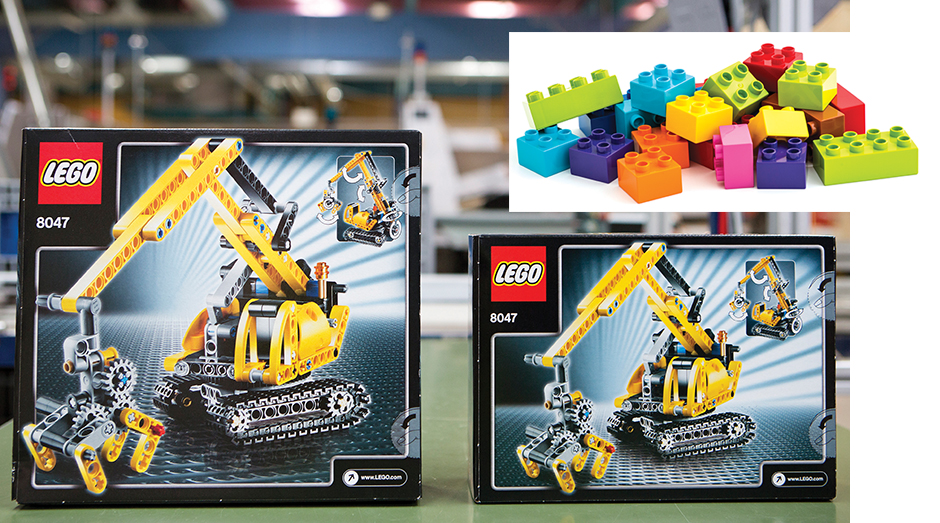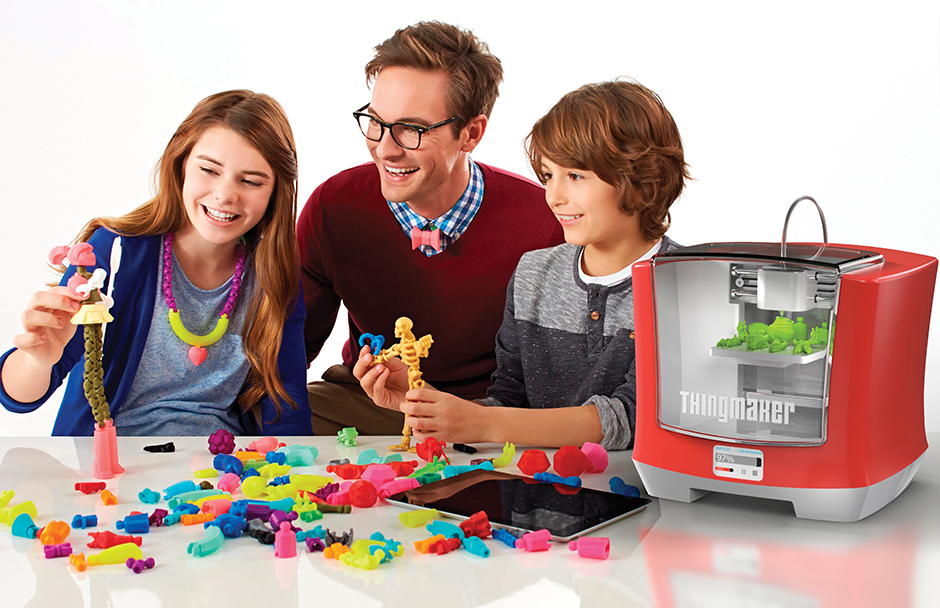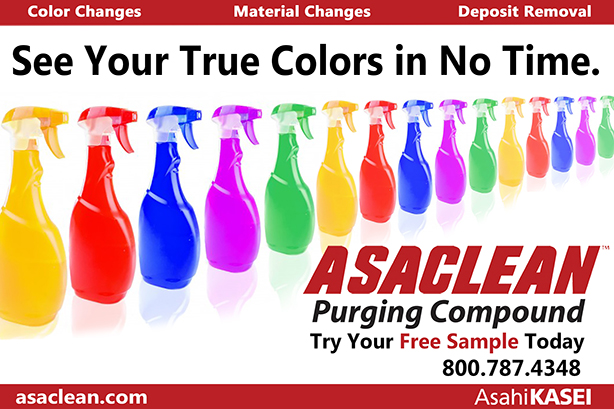Eye-opening Impact of Simple Design Errors on Product Costs
Previous Article Next Article
By Vikram Bhargava
Eye-opening Impact of Simple Design Errors on Product Costs
Previous Article Next Article
By Vikram Bhargava
Eye-opening Impact of Simple Design Errors on Product Costs
Previous Article Next Article
By Vikram Bhargava

A new version of the quintessential “rubber ducky” water toy for babies and children was introduced by CelebriDucks using an ultrasoft TPE and non-toxic colorants from PolyOne. Image courtesy of PolyOne Corp.

A new version of the quintessential “rubber ducky” water toy for babies and children was introduced by CelebriDucks using an ultrasoft TPE and non-toxic colorants from PolyOne. Image courtesy of PolyOne Corp.

In line with its ambition to reduce its carbon footprint, the Lego Group in 2013 introduced smaller boxes, which lower the carbon dioxide impact of its packaging by about 10%. Inset: Lego is looking for sustainable materials to replace ABS in its bricks. Image courtesy of Lego Group.

In line with its ambition to reduce its carbon footprint, the Lego Group in 2013 introduced smaller boxes, which lower the carbon dioxide impact of its packaging by about 10%. Inset: Lego is looking for sustainable materials to replace ABS in its bricks. Image courtesy of Lego Group.

Green Toys uses 100% recycled materials in its toys.
Image courtesy of Green Toys.

Green Toys uses 100% recycled materials in its toys.
Image courtesy of Green Toys.
A toy designer’s mission is to enable creative play experiences and engage the imagination of children, who learn as they play. At the same time, toys must be safe for children to play with—both in their design and in the materials used. In addition, there is a growing call for sustainability in toys, driven by a combination of consumer demand and corporate responsibility. Plastic materials can play a key role in both safety and sustainability.
Seeking safer toys
The hazard of lead in toys (particularly in paints or colorants) posed distinct safety issues in the past. But regulations — such as the Consumer Product Safety Improvement Act in the United States —now prohibit the use of lead in toys, and lead-free colorants are now widely used. One of today’s hot-button safety concerns is the plasticizers used in flexible PVC. Concerns about ortho-phthalate-based plasticizers led the European Union Commission, in 1999, to restrict the use of diethylhexyl phthalate (DEHP) in toys and childcare articles and diisononyl phthalate (DINP) and diisodecyl phthalate (DIDP) for toys that can be placed in the mouth.
However, several alternative chemistries have been available for many years. Three of the most widely used non-ortho-phthalate plasticizers in toys and children’s products, according to BASF, are diisononyl cyclohexanedicarboxylate (e.g., BASF’s Hexamoll® DINCH®), di-2-ethylhexyl terephthalate (known as DOTP or DEHT), and acetyl tributyl citrate (ATBC). “Manufacturers started switching to these three over the last 10–15 years, following restrictions on ortho-phthalates implemented in North America and Europe,” notes Patrick Harmon, BASF’s industry manager for industrial petrochemicals.
Peter M. Galland, industry manager for regulated compounds at Teknor Apex Co., agrees that DOTP will become a prevailing alternative to DEHP because of its safer animal toxicology. Although bio-based plasticizers are available and manufacturers would like to use them, “there is insufficient assurance of their permanence in the finished product, such as their not exhibiting blooming,” says Galland.
Harmon adds, “Product labels such as ‘phthalate-free’ or ‘bio-based’ say nothing about the safety of the product – alternatives must have hazard and exposure data to support their safe use, particularly in sensitive applications such as toys.”
Flexible PVC made with non-phthalate plasticizers “decorates well and is ideal for many types of toys,” notes Kate Gasparro, consumer industry marketing manager for PolyOne Corp. “Food-contact-grade TPEs are found increasingly in baby toys, because these items are more likely to be put into an infant’s mouth.”
Designing toys that won’t break (or won’t create hazards if they do break) is another aspect of safety. Gasparro notes that demand is high for impact-modified materials for toys, particularly for the fast-growing segment of connected electronic toys, which must pass a drop test.
More sustainable toys
Toy companies, while ever mindful of making sure their toys are safe for children, today are also concerned with sustainability of the materials used to make both the toys and their packaging. The cost of sustainable materials, however, is still a deterrent for many, says Gasparro. “We’re constantly evaluating and researching sustainable materials, and interest is high. But at the end of the day, prices are still too prohibitive for a lot of these buyers.”
Denmark’s Lego Group is one toy company that is on a quest to find sustainable materials that are also economically viable. “Consumers expect quality and safety. However, they don’t see why it can’t also be sustainable. They don’t expect to trade one for the other,” says Tim Brooks, vice president of environmental sustainability at the Lego Group. In addition, “Lego has always been a values-driven company, and one of our key promises is to create a positive impact through our environmental actions.”
Environmental sustainability has many facets, including reducing waste, lowering energy use, and materials sourcing. Lego Group announced a bold plan in 2012 to find and implement sustainable alternatives to current materials by 2030. Nearly half of annual materials use includes primary and secondary packaging and instructions, says Brooks, and the company has already made progress in these areas by reducing cardboard box size and using an average of 75% recycled content in packaging. The company also uses internal regrind for Lego’s snap-together, plastic bricks wherever possible to “close the loop” and reduce waste without compromising quality or safety. Finding sustainable alternatives to the fossil-fuel based polymers used to make Lego bricks — primarily acrylontrile-butadiene-styrene (ABS) — is a longer-term challenge. “The long timeline [by 2030] is necessary when considering the technical difficulties involved,” notes Brooks.
“Several factors influence the environmental sustainability of a material – the composition of the material, how it is sourced and what happens when the product reaches the end of its life. When we search for new materials all of these factors must be considered,” said Jørgen Vig Knudstorp, CEO and president of the Lego Group. The company also said it “believes a new sustainable material must have an ever-lighter footprint than the material it replaces across key environmental and social impact areas such as fossil resource use, human rights and climate change.”
In 2015, the company announced a 1 billion DKK ($150 million) investment into development of sustainable raw materials and packaging, including setting up a Sustainable Materials Centre in Billund, Denmark, and recruiting more than 100 materials specialists. The building’s design phase is expected to be completed this year, and the company hopes to open the new center by early 2019. Lego has hired about 60 of the center’s planned new employees, and already has begun work on projects.
The company is working with existing suppliers, universities and various partners. For example, in 2015 Lego announced a Climate Savers partnership with the World Wildlife Fund to assess sustainability and environmental impact of bio-based materials for Lego elements and packaging. Any new material must not compromise Lego’s safety and quality standards, but must pass the company’s extensive physical and chemical testing. “We don’t want to compromise on durability,” says Brooks, “This is a key selling point and part of what makes Legos sustainable because they can be handed down from generation to generation.” Existing materials are not a simple “drop in” replacement, so extensive research is needed to develop materials that can recreate the durability, colorability, precision molding, and even the audible click of the existing bricks, says Brooks. Ensuring a large enough volume and having multiple suppliers will be another challenge to overcome once materials are developed.
Sausalito, Calif.-based Green Toys Inc. has taken another route to sustainable toys. The company was founded in 2007 with the mission of using 100% recycled materials — primarily HDPE from recycled milk jugs — to make its eco-friendly toy line and has been winning toy awards since 2008. “In our opinion, the most environmentally friendly toy isn’t just a toy made from 100% recycled plastic, but a toy that is well built so that it won’t break and can be handed down for many, many years,” says Vince Giudice, director of research and development at Green Toys. He adds that safety is their number one priority; the company tests every lot of incoming resin and sends its products out regularly for mechanical testing.
As plastic industry experts are well aware, there is a long list of technical and logistical challenges when using recycled resins. “But as they say, if it was easy, everyone would do it,” notes Giudice. “With regards to logistics and supply concerns, there really are very few recycled resins that have a well-established recycling system in place. From a technical standpoint, it can be very difficult to work with recycled resins as they tend to want to warp and shrink much more than virgin plastic. It has taken us years to learn how to work with our current resin, and we are always looking for new ways to improve our product and mold designs.”
Giudice says that the company is “always on the hunt for new recycled materials that are safe for children, are readily available, and have material properties that are different from our current materials. A softer, rubber-like material that is both made from recycled materials, as well as recyclable, would be ideal.”

